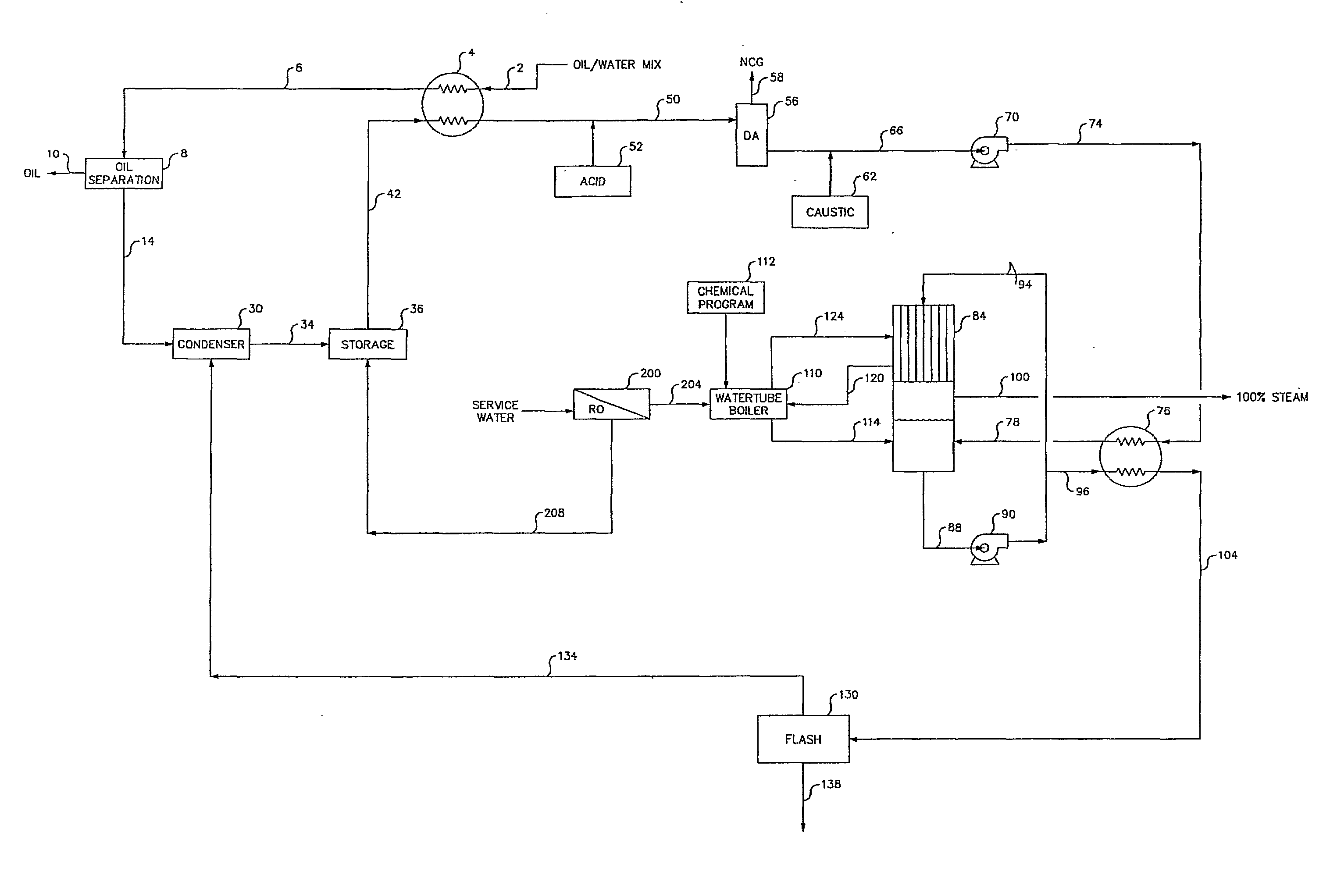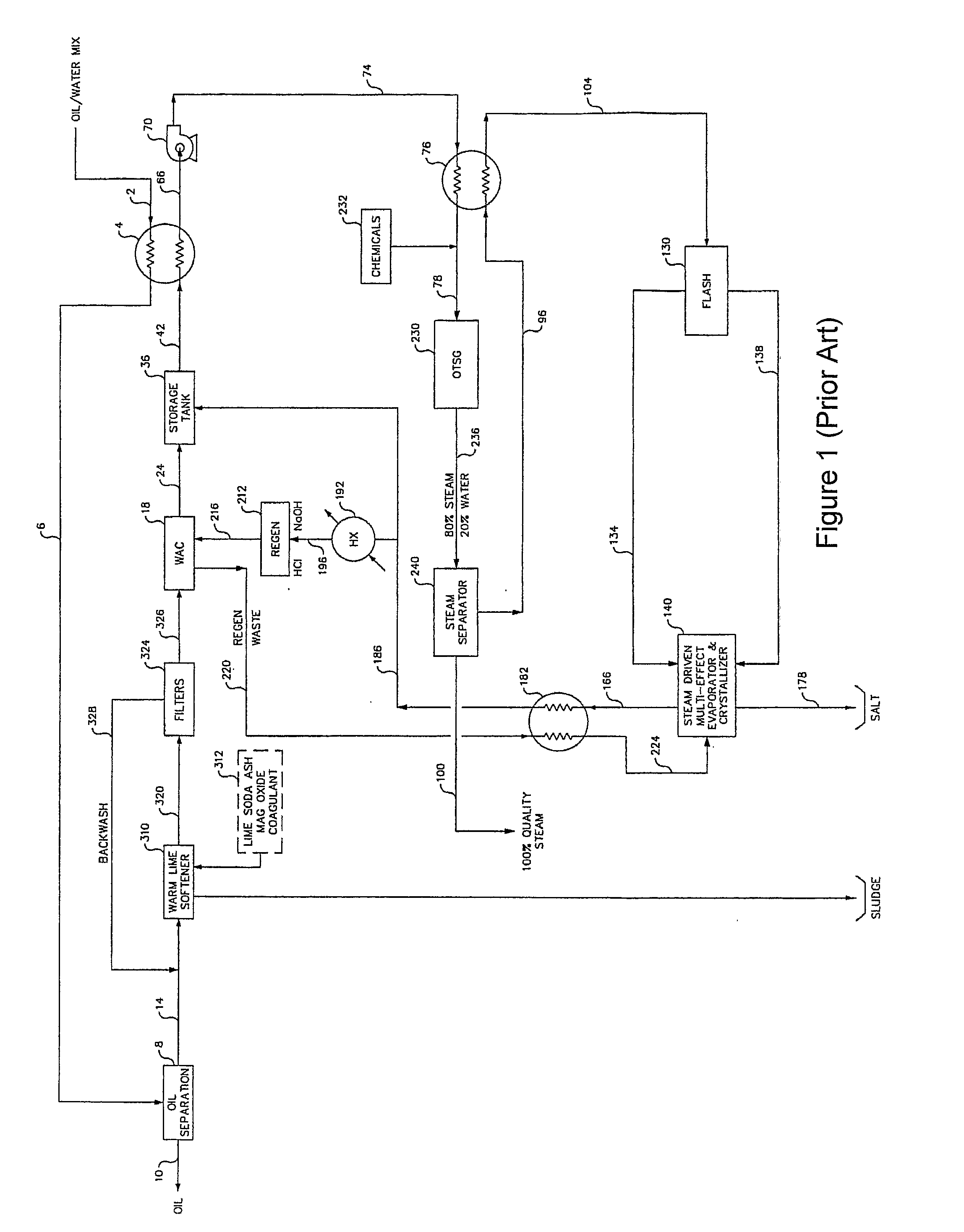Method for Production of High Pressure Steam from Produced Water
a technology of produced water and high pressure steam, which is applied in the direction of steam generation using hot heat carriers, separation processes, and well accessories, etc., to achieve the effects of minimizing maintenance, minimizing electrical power consumption, and minimizing waste products
- Summary
- Abstract
- Description
- Claims
- Application Information
AI Technical Summary
Benefits of technology
Problems solved by technology
Method used
Image
Examples
Embodiment Construction
[0070]Heavy oil recovery operations have increasingly incorporated the steam assisted gravity drainage (SAGD) method to recover oil from tar sand and other networks. In this method the injected steam is more efficiently utilized as 100% quality (i.e., no liquid water entrained with the steam) in contrast to older methods in which an 80% steam / 20% water mixture was used for steam flooding of the oil field. However, the once through steam generators (OTSG) in standard use are designed to generate 80% quality steam which then requires the use of steam separators to remove the entrained water portion to provide 100% quality steam for down-hole injection. The use of an OTSG to supply the 100% quality steam required for steam flooding leaves the high pressure high temperature liquid portion that needs to be handled and disposed of. In some cases it can be utilized for other steam consumers by using a sequential arrangement of flash tanks, each providing a lower pressure steam, but ultimat...
PUM
| Property | Measurement | Unit |
|---|---|---|
| Pressure | aaaaa | aaaaa |
| Pressure | aaaaa | aaaaa |
| Concentration | aaaaa | aaaaa |
Abstract
Description
Claims
Application Information
 Login to View More
Login to View More - R&D
- Intellectual Property
- Life Sciences
- Materials
- Tech Scout
- Unparalleled Data Quality
- Higher Quality Content
- 60% Fewer Hallucinations
Browse by: Latest US Patents, China's latest patents, Technical Efficacy Thesaurus, Application Domain, Technology Topic, Popular Technical Reports.
© 2025 PatSnap. All rights reserved.Legal|Privacy policy|Modern Slavery Act Transparency Statement|Sitemap|About US| Contact US: help@patsnap.com



